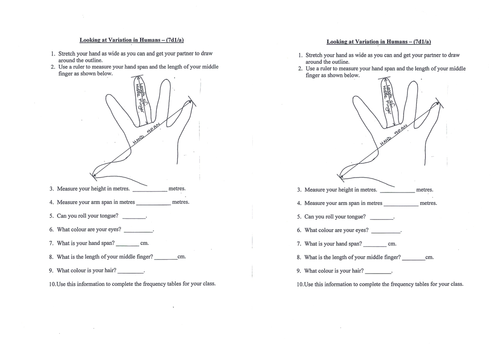
43Uploads
13k+Views
2k+Downloads
Biology

Accuracy and Precision
A lesson designed to help students understand accuracy and precision, and how to apply these terms to evaluative AO3 GCSE questions.

Standard Deviation in Biology
Used during Covid to model the steps required to calculate standard deviation, and to explain what this tells us about our data.
Still used as an independent learning homework or clinic.

19.1 Cellular Control & Mutation
A full lesson that reviews Year 12 knowledge of transcription and translation, and asks students to convert a DNA base sequence into a polypeptide, then mutate this code and discuss the impact of different types of mutation on the resulting polypeptide.

BTEC Specialised Cells
Having set pre-reading which asks students to create posters on specialsied cells, this lesson challenges students to link their observations about structure to function.

BTEC Applied Science Sex Cells
A lesson that asks students to compare the relative sizes of sperm and egg cells, and use their calculations to create models of each.

GCSE Biology B6 Monoclonal Antibodies in Pregnancy Tests (H)
A lesson that asks students to use exam-board certified mark schemes to make a playdough model to show how antibodies work in a pregnancy test.
Includes animated demonstration on a powerpoint, exemplar work and a challenge tasks that asks students to apply their understanding to a Lateral Flow test.

BTEC Applied Science Endothelium and Smoking
This covers tissue types and encourages students to research the effect of smoking, to present their findings to their peers.

BTEC Specialised Cells Practical
Having taught about specialsied cells, this lesson asks students to view specialised cells and tissues under microscopes and carry out biological drawings.

GCSE Biology Calculating Rate Using Tangents
A lesson that goes through rate calculations and tangents in detail. References to worksheets are from Kerboodle.

GCSE Biology Homeostasis and Control Systems
An introduction to the mechanisms of control systems, with a table of exam questions to challenge students to apply their knowledge

GCSE Biology 16.1 Communities, Biotic and Abiotic Factors
A lesson that asks students to apply their understanding of interdependence to ecosystems, identifying biotic and abiotic within them

GCSE Biology B5 Transmission of Pathogens and Non-Specific Human Defences
This lesson covers the transmission of pathogens and non-specific defences. Page references refer to the Kerboodle textbook.

Immobilising Enzymes
Complete lesson, with practical work and exam questions, designed for OCR’s Cloning topic.

Cloning Cauliflower
A lesson linking stem cells to cloning plants. Practical instructions are shared on the PPT.

10.3.1 Evolution and Natural Selection
PPT and lesson to illustrate the theory of Natural Selection and Evolution

Validity
A lesson designed to cover the concept of validity when analysing data.
Designed to be taught at the start of the AQA B7 Non-Communicable Disease topic.
Students evaluate the validity of different sources to decide upon the principles of a valid investigation, and then apply these ideas to an examination question.

10.4.1 Inheritance
Designed for KS3 Activate. QR codes provide information about each one of the 46 chromosomes that make up the human genome. Students use these to research one of their choosing, and make a top trumps card that is used to compare the genes of each chromosome.
This has been successful in helping students to understand the placement of genes on chromosomes and the link between characteristics and genes.

10.3.3 Extinction
Complete lesson in which students work in groups to reseach endangered species to understand factors that cause extinction. Contains instructions for group research, peer assessment feedback sheet, plenary and homework tasks.
Designed for KS3 Activate




















